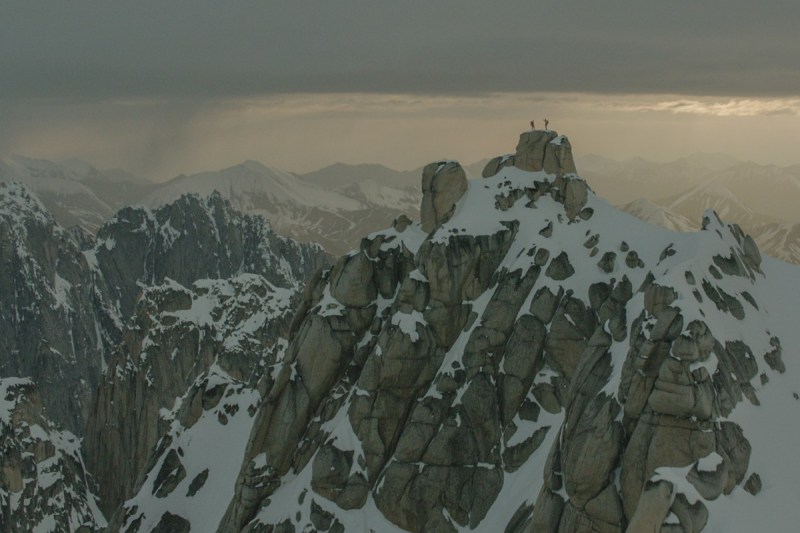“When you discover a big climb that’s never been done, it kind of feels like falling in love,” climber Renan Ozturk said.
Ozturk is a man who takes this love to heart. More than 80 years after American mountaineer Bradford Washburn first photographed the 20,130-foot Denali (formerly Mt. McKinley) in Alaska, climbing buddies Ozturk and Freddie Wilkinson dreamed up an epic journey from the early 20th-century photographic work.

Inspired by Washburn’s images, the pair formed the almost crazy plan to forge a new route across several of the Last Frontier’s most forbidding peaks, including the technically complex, 10,000-foot Moose’s Tooth massif. In a new-school way to explore the same landscape that Washburn first mapped, the pair took video documentation of their journey, an ascent never before achieved. Now streaming on Amazon and Apple TV, “The Sanctity of Space” follows the three climbers who undertook this odyssey, intertwining Washburn’s pilgrimage of discovery almost a century earlier.
“My life is completely driven by the mountains,” Ozturk says in the film.
Ozturk serves not only as a commercial and documentary filmmaker, but also as an expedition climber for The North Face and a photojournalist for Sony and National Geographic. He’s established an international reputation for climbing films like “Meru,” which won the 2015 Audience Choice Award at Sundance, and the critically acclaimed “Sherpa,” which screened at TIFF and Telluride.
Wilkinson echoed this undeniable attraction and constant search for elevation.
“I was just looking for inspiration and I kept on circling back to the Moose’s Tooth in Brad Washburn’s photos,” Wilkinson says.
A New Hampshire mountain guide in his off time, Wilkinson has received numerous mountaineering accolades, including the prestigious Piolet d’Or for making the first ascent of Saser Kangri II, which was then the second-highest unclimbed mountain in the world. Wilkinson’s many first ascents spread across Alaska, Nepal, India, Patagonia, and Antarctica.
“(Washburn’s) the greatest aerial photographer of all time,” fellow climber Zack Smith says in the movie.
Smith grew up in Ashland, Oregon, and began rock climbing with his dad when he was 13 in Yosemite, using webbing for a harness, hip belays, and Vans skateboard shoes. He started his guiding career in Moab, Utah in 2000, specializing in desert towers and crack climbing clinics. Smith went on to find first ascents in Argentine Patagonia, Chilean Patagonia, Kichatna Spires, and The Ruth Gorge in Alaska, The Bugaboos in Canada, The Black Canyon in Colorado, and Indian Creek in Utah.
Washburn was a pioneering mountaineer, photographer, and cartographer, embarking on Alaskan adventures beginning in the late 1930s. He married Barbara Polk Washburn in 1940, honeymooning in the state and accomplishing the first ascent of Mount Bertha together. The pair established several first ascents in the U.S. northernmost state, carving new routes on many major Alaskan peaks, and making Polk Washburn the first woman to summit Denali.
“Brad’s photography taught me that you could use tiny human elements to convey the scale of these massive landscapes,” Ozturk says.
From drone shots, we find tiny humans, visible only by bright winter jackets, atop massive peaks that sprawl across the great untouched North. It’s this immense beauty the climbers are dedicated to discovering, and through their eyes in “The Sanctity of Space,” the audience finds the human quest to transcend the limits of being tiny creatures seeking the awesome majesty of this vast planet.



